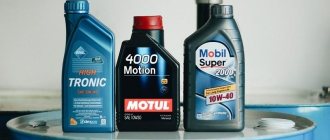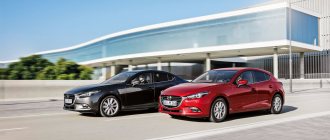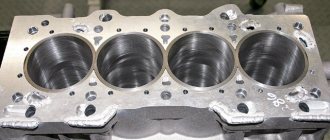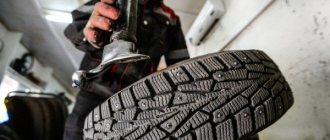Compatible cars for 4th generation LPG
4th generation gas equipment is suitable for most injection cars. Carburetors and monoinjectors make do with earlier generations. The exception is injection engines with two gasoline injectors per cylinder, which do not operate synchronously, but depending on the load. Such modifications are found on Lexuses or Toyotas for the Japanese market - they cannot be converted to gas without expensive modifications. In other cases, there are no obstacles to gasification.
The fact is that the main unit of the gas installation is the electronic control unit (ECU). His task is to manage the system. However, without knowledge of gasoline algorithms, this will not be possible, because gas injection is the most important function of the “gas brain” and is based on corrections of gasoline parameters. Here the master-slave principle is implemented, where the main one remains the standard BC. Read more about the 4th generation HBO here: https://gaz-time.ua/pro-gbo. Next, we will touch on the most common mistakes associated with converting a car to propane-butane.
FAQ
What is LPG?
LPG (liquefied gas) is a mixture of hydrocarbons, dominated by propane and butane, which, under normal environmental conditions, have a gaseous state, but this mixture can turn into a liquid state at pressures above 2 bar. LPG is obtained from petroleum at a rate of approximately 2% of the resulting product, and approximately 5% of natural gas. It is also obtained as a by-product during oil refining. LPG currently sold in Italy comes 55% from natural gas fields and 45% from oil refining. The use of LPG as a fuel dates back to the beginning of the 19th century and thanks to significant technological progress in LPG systems, the use of this system today is an ideal alternative for those who want to save money and at the same time drive without harming the environment. Cars with LPG actually have lower emissions than gasoline and do not produce harmful particles. In addition, burning LPG does not produce carbon residue. Therefore, the engine oil in cars with LPG remains clear and with intact properties even after many thousands of kilometers, and this helps reduce wear on the mechanical parts of the engine. In Italy today there are approximately 3,000 gas filling stations, which serve more than 1,700,000 LPG-equipped vehicles on Italian roads.
Which cars can be equipped with an LPG system?
This system can be installed on all cars with gasoline with a carburetor supply system, equipped with a turbocharger and injector, as well as a catalytic muffler, certified up to the Euro 6 standard. Systems are also available for the installation of LPG gas equipment for the most common engines with direct injection.
What advantages appear in a car converted with an LPG system?
Significant savings on fuel prices (more than 50% compared to gasoline). When calculating the economic benefits, one must keep in mind the price advantage of LPG (from 50% to 60%) along with a lower mileage of approximately 10-12%. Greater autonomy, generally between 400 and 500 kilometers, is achieved through an additional LPG tank. Thanks to the lowest emissions, normal road traffic is allowed for a car with LPG, even in the case of traffic restrictions by law depending on even and odd numbers. When burned, LPG does not produce carbon residue (which causes darkening of the engine oil). Therefore, the oil in cars with an LPG system remains clear even after many thousands of kilometers and allows for improved performance and reduced engine wear.
How reliable is LPG gas equipment?
Absolutely reliable. LPG equipment installed in Italy after January 2001 complies with all European regulations ECE ONU 67 01, which guarantee high safety standards, based on extremely stringent international specifications and tests (Crash test, vehicle fire, etc.). These systems are tested and certified according to these standards in every part. They also have various safety devices, such as: a tank multi-valve with a tank loading blocking system when it reaches 80%, which limits the filling to ensure gas expansion in case of temperature rise, a safety electrovalve that closes the gas circuit at the outlet of the tank and at the inlet of the reducer pressure in the engine compartment. The tank is also certified to the strictest standards. In conclusion, LPG equipment is absolutely reliable, and the Lovato Gas LPG system is now used as first choice or recommended equipment for installation by many vehicle manufacturers.
Does your car lose power if it runs on LPG gas?
Modern Lovato GAZ systems with sequential injection give a loss of power, the quantitative limits of which range from 2 to 5%, in total below the power consumption, for example, from turning on the air conditioner in the car and are not significant while driving.
Does a car consume more with an LPG system?
According to various physical and chemical characteristics of gas, compared to gasoline, there is an increase in fuel consumption of a total of 10 to 12%, also depending on the type of equipment installed. The increase in consumption occurs precisely due to the thermal potential of LPG. However, LPG's lower cost and lower environmental impact make its use a profitable and environmentally friendly choice (savings of approximately 50%).
Is it difficult to use LPG equipment?
With the new injection equipment from Lovato Gas, everything happens automatically. The driver has no choice but to fill up the gas, press the switch button... and start saving!
With the installation of LGP equipment, can I still drive on gasoline?
After installing the LPG equipment, the car has dual power, and is able to drive on gas or gasoline. In this case, the vehicle's range of range also increases, depending on the size of the installed gas tank.
What warranty is given for LPG equipment?
The warranty given for Lovato Gas LPG equipment is 2 years from the date of installation of the equipment on the vehicle.
What maintenance is required for LPG equipment?
To guarantee good long-term performance, the equipment must be checked periodically (eg filter replacement), depending on the maintenance plan, every 10-20,000 km. This procedure should therefore be carried out in a workshop in connection with regularly scheduled vehicle inspections and maintenance.
What emission regulations apply to vehicles with LPG equipment?
By law, a converted car that now has LPG equipment must comply with the same regulations that apply to the car's original gasoline certification. Modern Lovato Gas equipment is certified to Euro 6 and is therefore compatible with vehicles that meet the latest EU regulations.
Can vehicles equipped with LPG be driven in case of traffic restrictions?
In a case that involves restriction of traffic due to air pollution, and traffic is carried out depending on even or odd number plates; or there is a traffic ban based on the level of exhaust gases (for example, a ban on Euro 0/2 cars), gas-powered cars are usually recognized as environmentally friendly and can always participate freely in road traffic.
Does the LPG tank take up a lot of space in the trunk?
Today, toroidal-shaped tanks are preferred, which can be located in a place intended for a spare tire. In this case, space in the trunk is not reduced, and if unforeseen circumstances arise, such as a tire puncture, then a set of tools for repair and inflation is always available. If a cylindrical tank is installed in the trunk, this can lead to a reduction in available space by approximately 20-25%.
Can the tank be installed under the car?
This installation is possible if the minimum distance from the edge of the vehicle to the ground required by regulations is observed (250 mm when the vehicle is empty). The tank must then have an additional protective cover made of steel sheet installed and the minimum distance to the ground must not be less than 200 mm. with an empty car.
How reliable are LPG tanks?
LPG tanks are highly reliable, certified and tested to the strictest standards, and are highly resistant to impact and fire, and this resistance is higher than that of conventional gasoline tanks. Since 2002, all LPG tanks installed in Italy are certified in accordance with ECE/ONU 67/01 regulations, which require, for example, that each tank be tested at 30 bar, almost three times the normal operating pressure. LPG tanks are made of high strength and thick steel, heat treated so that in the event of an impact they are deformed, but without breaking, and the tanks are tested at the certification stage at a pressure of 67.5 bar. In addition, in accordance with ECE/ONU 67/01 regulations, the multivalve installed on the tank has a safety valve against overpressure, as well as a thermal safety valve for releasing gas in the event of reaching an elevated temperature. As numerous “bonfire” tests have shown (a test that simulates a car fire due to external causes), these technologies result in absolutely reliable products. An additional guarantee is Italian law, which requires the LPG tank to be replaced every 10 years (from the date of manufacture, which is stamped on the tank identification number).
What services are available in Italy and abroad in case the LPG equipment is faulty?
Service is possible through official distributors and authorized Lovato Gas workshops located in Italy and abroad. Lovato Gas, in fact, has its distributors in all European countries.
Is there a good network of LPG filling stations?
There are more than 3,000 gas stations in Italy and they are distributed capillarily throughout the territory and along the highways. There are more than 27,000 gas stations in Europe, and their number is constantly growing. The loading valve with standard connection in Italy is also used in most European countries, with the exception of Germany, Holland, Luxembourg, United Kingdom and Ireland. Corresponding adapters are available for these countries.
What is the car tax for LPG cars?
In principle, the car tax on LPG cars converted with the retrofit system is the same as for the petrol original, since petrol can be used for them. And yet, some legislative acts make it possible for regions to introduce benefits or exemptions from car taxes at the local level.
Why are LPG cars more environmentally friendly?
When powered by LPG, pollutant emissions are significantly reduced, in particular CO2 is reduced by more than 30%, HC by 20% and, accordingly, CO2 emissions. In addition, gas cars do not produce PM10 particles, which are very critical for urban pollution.
Is it possible to park a car with LPG in an underground garage?
LPG vehicles equipped with safety devices that comply with ECE/ONU 67/01 standards, as well as all converted vehicles from 01/01/2001, can be parked in the underground garage up to the ground floor level. Cars converted before the previously specified date, and therefore meeting the previous standards, can only park on the ground floors.
Can cars with LPG be transported on ships or cruise ships?
There are no special rules in this regard, and the maritime company takes upon itself the determination of these rules. According to established practice, it is necessary to declare gas equipment at the time of purchasing a ticket and at the time of loading the vehicle. And thus, you should always inform the water transport company.
Errors in choosing gas installation equipment
For normal operation of the equipment, three conditions must be met: correct configuration, qualified installation and correct configuration. When we talk about configuration, we first of all mean compliance of the capabilities of LPG units with the requirements of the internal combustion engine. For example, the performance of the evaporator reducer must correspond to the power of the motor. A lack of propane under load leads to an unauthorized switch to gasoline.
The same requirements apply to gas injectors, only here, in addition to performance, response speed plays a role. As a rule, the more powerful the engine, the more “rapid-firing” the injectors are selected. However, this rule does not always work. For example, it is not recommended to install slow boosts on fuel-injected Lanos: although the engine power of the Daewoo is not prohibitive, the standard injection algorithm is such that the injector is required to have a “rate of fire” in order to complete the cycle faster, but at the same time fire more often.
There are special requirements for ECU firmware when a car with direct injection (TSI or FSI type) is gasified. The fact is that design nuances do not allow completely shutting off the gasoline supply in gas mode. Otherwise, the standard fuel injectors will fail. The reason is overheating due to the proximity of the combustion chamber. That is, gasoline must always circulate to cool the injector. Therefore, the system is configured so that gas and gasoline replace each other alternately. It is impossible to implement such an algorithm without consequences on universal budget software.
How to understand whether it is necessary to install HBO?
In the old days, HBO kits were relatively inexpensive, and moreover, they could be installed in the nearest garage at a negotiated price. At the same time, there was no special control from the authorities. But those days have sunk into oblivion; the old kits have been replaced by newer models, and with them the installation rules.
Modern cars and their new level require already modified gas equipment. Moreover, each new generation of gas equipment is more expensive than previous models. Accordingly, the costs of the installation itself have increased significantly, which means that the maintenance of a gas car is now more expensive. It turns out that installing LPG on a car is no longer so profitable.
In general, any car enthusiast can independently calculate whether it is profitable for him to install LPG on his car. To do this, you simply need to calculate your annual gasoline costs and multiply them by the number of years your car has been in use. Then you should carry out the same calculations, only with gas, adding the cost of the gas equipment itself. If the “gas” figures are radically lower, the benefit will be obvious.
Installation and configuration
Probably no one argues about the importance of correct installation, because mistakes by installers result in material damage and serious risks to the life and health of the driver and passengers. But it happens that precise settings are neglected. As a result, the resource of the internal combustion engine decreases, fuel consumption and driving dissatisfaction increase. And all because of the incorrect composition of the fuel mixture. To prevent this from happening, the universal software is configured correctly, and the resulting settings are checked on diagnostic equipment. In machines with BC without feedback, the correctness of the adjustments is checked using a gas analyzer.
Don’t repeat the mistakes of car owners who have already gone down the wrong path and instead of saving money received unexpected expenses. Initially, do it right - contact certified installation centers. Then there will be no problems with either the re-registration or the operation of the gas equipment.
What is the difference between propane and methane
There are two types of gas fuel - propane and methane. Propane is liquefied petroleum gas (transported under a pressure of 10–15 atmospheres). Methane is a natural gas (in a car it is under pressure of 200–250 atmospheres). Because of this pressure difference, the two fuels require different cylinders. For propane, a metal cylinder with a wall thickness of 4–5 mm is sufficient, but the walls of methane cylinders should be much thicker. This places restrictions on the use of methane in passenger cars. To lighten the weight of the cylinders, they are made of metal-plastic. Now about the power reserve. A standard (50-liter) propane cylinder contains 40 liters of liquefied gas, propane consumption is slightly higher than gasoline consumption (maximum 10%). Methane is measured not in liters, but in cubic meters. In addition, methane plants have much higher safety requirements. Based on this, propane equipment is most often installed on passenger cars.
Part of the equipment
4th generation gas equipment includes several elements. However, they are all included in a single set of equipment. In order to equip your car with a sequential injection system, you need to install an electronic control unit, a fuel switch, a gas storage cylinder, a gas solenoid valve, a multivalve, a filling device, a gas reducer, injectors, a gas filter, as well as gas temperature and pressure sensors. All elements must be of high quality, and they must be monitored, since if one of them fails, problems will begin with the system as a whole. For example, if sensors fail, excessive fuel consumption may occur. Therefore, it is better to use the STAG gas equipment kit.
As a rule, many car enthusiasts are put off from installing an LPG kit on their car because of the heaviness and dimensions of the gas cylinder required for storing liquefied gas. It can be installed both in the trunk (toroidal cylinders are used for this) and under the bottom of the car (cylindrical cylinders). The latter applies to SUVs that have a spare tire installed there. Among experts you can find frequent complaints regarding Turkish cylinders. They compensate for the low quality of the metal by the thickness of its walls. In general, it should be approximately 4 mm, and the metal itself should be resistant to damage and high temperatures. Note that the car will not stand still, but move along the roads of Russia, where sometimes only the direction of movement is called a road. Therefore, it must be well fixed and calmly survive bumps and potholes. It is worth noting that Russian-made cylinders are widespread and have proven their reliability.
The refueling device is used to refuel a car with gas at gas stations. It is protected by a cap or lid.
The filling device is installed in the rear of the car in close proximity to the tank. A common case is when it is located in the bumper. During refueling, a gun is connected to it, through which the cylinder is saturated with gas.
The key to its safe operation and the system as a whole is the multivalve. It consists of a number of valves that are combined into a single element. It has an inlet and an outlet - filling and supply lines. The width of the holes is 8 mm (marking – EXTRA), for the flow line it can be 6 mm. As necessary, it opens and closes the gas supply from the cylinder to the engine and is responsible for its supply in the required quantity. In addition, in case of excessive pressure, it shuts off the fuel supply, thereby protecting the system from extreme effects of pressure. On 4th generation gas equipment, which were developed in Holland, there is no multivalve. Instead, several valves are used, which are not integrated into a single device, but are installed on a gas cylinder using special fittings.
The engine compartment houses a gas reducer. Its role is the transition of gas from a liquid state to a gas (gas is stored in a liquefied form in a cylinder). This occurs by reducing its pressure. The element itself can be either independent or connected to an electric valve. The solenoid valve is equipped with a removable filter for liquefied gas, which protects the systems from possible damage associated with fuel quality.
Gas injectors regulate the amount of gas supplied directly to the engine. Choosing a nozzle manufacturer is an important point, since they differ from each other in their performance and operating speed.
To ensure that the gas does not damage the injectors due to its quality and the presence of impurities, a gas filter is used.
Gas equipment is controlled by a control unit, which controls the system as a whole. Control is based on data received from the UCC-1 gas temperature and pressure sensor, as well as the pressure in the injector rail.
After analyzing the information, the ECU opens and closes valves, injectors, and interacts with the gasoline system.
Thanks to the interaction of the two fuel systems, there are no errors when switching from one type to another. In addition, the control unit is responsible for the switching itself, which depends on the engine temperature and gas volume.
To switch fuel from gasoline to gas, a special switch is installed inside the car. It opens and closes the gas solenoid valve and activates or deactivates the gas injectors. To provide sound signal for switching, a special buzzer is built into the switch.
It is worth noting that the items included in the kit may come from different manufacturers.









